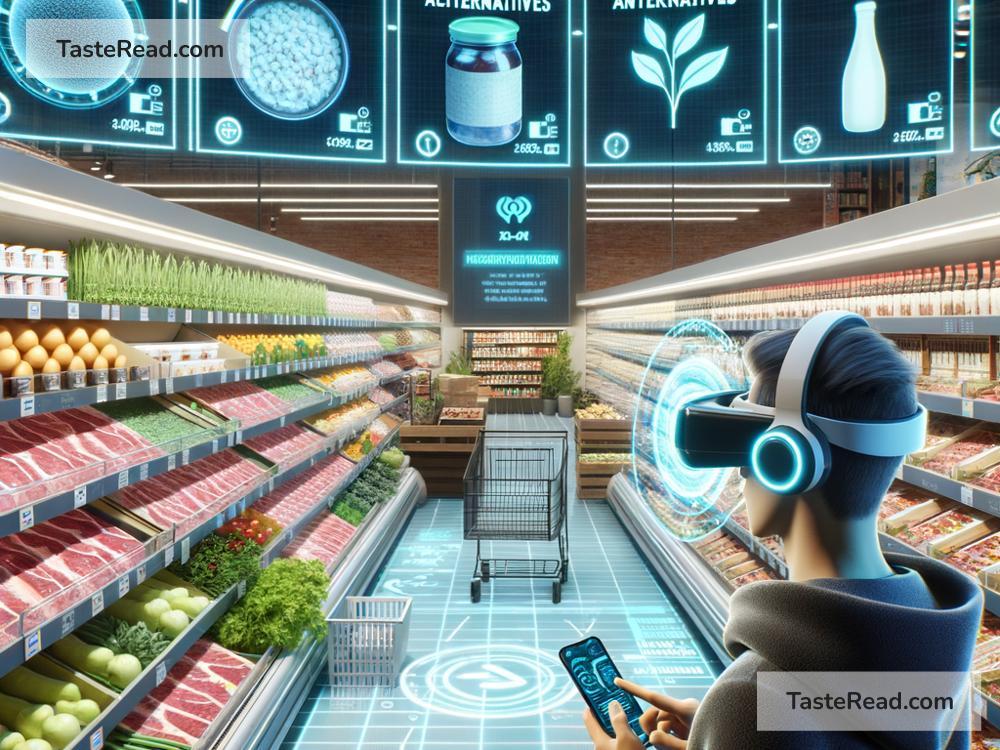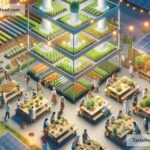The Future of Food and Consumer Behavior: What’s Next?
Food is an essential part of life. Everyone eats, but the way we think about food is changing quickly. New technology, growing awareness about health, and concern for the planet are shaping what we eat and how we make choices about food. In this blog, we’ll explore how the future of food is evolving and what it might mean for consumers in the coming years.
The Rise of Sustainable Food
One of the biggest trends in the future of food is sustainability. People are becoming more worried about how their eating habits affect the environment. Farmers, food companies, and scientists are working hard to create food that doesn’t harm the planet.
For example, growing crops like fruits and vegetables uses a lot of water and energy, but newer methods like vertical farming can save resources. Vertical farming grows plants indoors in stacked layers, using less land and water. This is especially important as cities grow, and farmland becomes more limited.
Another example is the push for reducing food waste. A large portion of food gets thrown away each year before it even gets eaten. New apps and smart packaging are helping consumers track the freshness of food and make better use of leftovers. In the future, people may shop smarter, avoiding waste while also helping reduce greenhouse gas emissions.
Plant-Based and Lab-Grown Foods
The food industry is also changing with new options, such as plant-based and lab-grown foods. More consumers are interested in cutting back on meat for health reasons and to fight climate change. Plant-based proteins, like burgers made from pea or soy ingredients, are now more common in grocery stores and restaurants.
But the future goes beyond traditional plants. Scientists are developing lab-grown meat. This means real meat is grown in a lab without raising animals, which could help reduce the environmental impact of livestock farming. Lab-grown meat still has challenges, like high costs and consumer acceptance, but it’s likely to become more mainstream in the years ahead.
For those who like unique flavors or are adventurous eaters, food companies are exploring using insects as a protein source. Not only are insects rich in nutrients, but they also require far fewer resources to grow compared to animals. Foods like cricket powder might seem strange now, but it could be the protein of the future.
Personalized Nutrition
Imagine eating foods that are specifically designed for your body! Personalized nutrition is becoming more popular thanks to advancements in science and technology. People are already using wearable devices to track their health, so it’s a natural step for food to follow this trend.
In the future, consumers may have access to food recommendations based on their DNA, gut health, or even daily habits. For example, if someone has low energy, they might choose foods rich in specific vitamins that are tailored to their needs. Apps may suggest meal plans or grocery lists based on data collected by health tracking devices.
Personalized nutrition could make meals more enjoyable and improve overall well-being. However, it might also bring up questions about privacy and cost, since the technology behind it is highly advanced.
Technology in Food Shopping
Shopping for food is changing too! We already see the rise of online grocery delivery and apps that make ordering food easy. In the future, technology like artificial intelligence (AI) and smart kitchens will play a bigger role in how people shop and prepare food.
For example, smart refrigerators can track what food is inside and suggest recipes based on what you already have. AI could also point out healthier food options while you shop online, making it easier for consumers to make smart choices.
Additionally, automated grocery stores, where you don’t need a cashier, are becoming more common. These stores allow people to grab items, check out automatically, and skip long lines. Faster, more efficient shopping methods will give consumers more time and convenience.
Changing Consumer Values
As food changes, so do people’s values around eating. Young consumers, like Millennials and Gen Z, care more about how their food impacts the planet and society. They ask questions like, “Where does my food come from?” and “Is the company behind this product ethical?”
People are also valuing healthier options. Low-sugar, organic, and non-processed foods are gaining popularity because consumers want to feel good about what they eat. Many food companies are changing their recipes and marketing strategies to match these demands.
Convenience remains a top priority too. Busy schedules mean ready-made meals, meal kits, and fast food aren’t going away. But even within the convenience sector, consumers are asking for more nutritious and eco-friendly options.
Final Thoughts
The future of food is exciting, packed with innovation and new possibilities. With sustainable practices, plant-based proteins, personalized nutrition, and better shopping technology, the way we eat will look very different in the next 10 to 20 years. Consumers are becoming more informed and thoughtful about their choices, shaping the food industry in unique ways.
Still, change won’t happen overnight. It’s important for food companies, governments, and scientists to work together to create solutions that are affordable, accessible, and appealing to everyone. After all, food is not just about keeping our stomachs full—it’s about staying healthy, connecting with others, and taking care of the planet.
So, the next time you sit down for a meal or shop for groceries, consider how your choices today might influence the food of tomorrow. The future is closer than you think!


